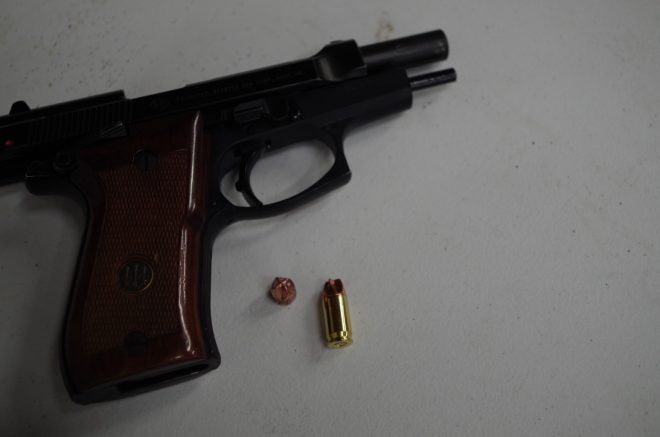Ballistic Testing of Hornady XTP vs Black Hills Xtreme Defense Ammunition in .380 Auto
Welcome to the fifth installment of our ballistic gel testing series. The current series is sponsored by Clark Armory who provided the testing medium and rounds:
- Hornady XTP
- Black Hills .380 Auto Xtreme Defense Ammunition
We were fortunate enough to have Kayla Boblick (an up and coming 3-gunner, a promotional shooter for Carbon Arms, BMC Tactical, Eggleston Munitions, Butch’s Reloading, and Brass Sales Inc.) at the shop the day we were testing. We asked her to do the shots for us.

Yes, it is staged… She is a much better model than either Tom or I… 🙂
Technical Details of Black Hills Xtreme Defense in .380 Auto
Black Hills .380 Xtreme Defense Ammunition combines two of the shooting industry’s bests: Lehigh Defense’s CNC projectiles and Black Hills loading. With a similar shape the to the Xtreme Penetrator, the flutes on the Xtreme Defense projectile are cut at steeper angles to maximize permanent wound cavity and reign in over penetration. These rounds pass extremely well through a wide range of barriers and do not run the risk of clogging like tradition hollow points.
Hornady XTP 90 gr in .380 Auto
- Caliber: .380 Auto
- Weight: 90 gr.
- Bullet: XTP (Extreme Terminal Performance)
- Velocity: 1000 fps
- Energy: 200 ft. lbs.
About Hornady:
Hornady Manufacturing Company is an American manufacturer of ammunition and handloading components, based in Grand Island, Nebraska.
Hornady’s website: http://www.hornady.com
Black Hills .380 Auto Xtreme Defense
- Caliber: .380 Auto
- Weight: 60 gr.
- Bullet: Xtreme Defense
- Velocity: 1150 fps
- Energy: 176 ft. lbs.
About Black Hills:
For the past 30 years Black Hills Ammunition has built its name on quality. Founded by Jeff Hoffman, Black Hills currently supplies ammo to the U.S. Military as well as a large number of firearms manufacturers who use Black Hills ammo to test their firearms. Black Hills currently sells both new and factory remanufactured ammo as well as cowboy action rounds.
Black Hills’ website: http://www.black-hills.com/
Test Parameters and Setup
Our testing format is to test a single round (potentially with multiple calibers) per article against the following four tests: against bare gel, gel covered with several layers of clothing, gel behind drywall and gel behind automotive glass (both of the last two will also have a layer of clothing over them), and to compare it to a known popular round (this was a new request).
First order of business will be testing the density of the gel with a BB fired at a known rate. We will fire this into a corner of the gel
We are currently suspending chronographing the rounds until we can get a different setup/more reliable equipment.
The test will look like this:
- Set up shooting position and recording devices
- Set up naked gel
- Fire BB at 500 to 600 feet per second at Gel and photograph penetration
- Fire round at gel while filming video and then photograph penetration from front, side and top.
- Repeat steps 3 to 5 with the other tests.
Test 1: Bare Gel
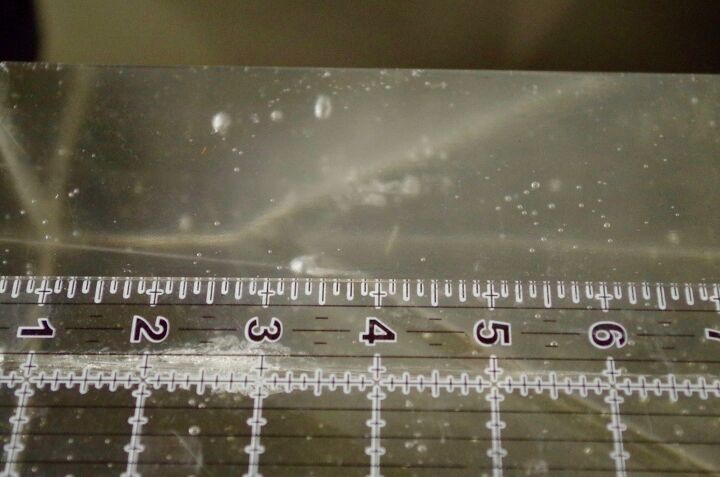
Bare Gel – BB
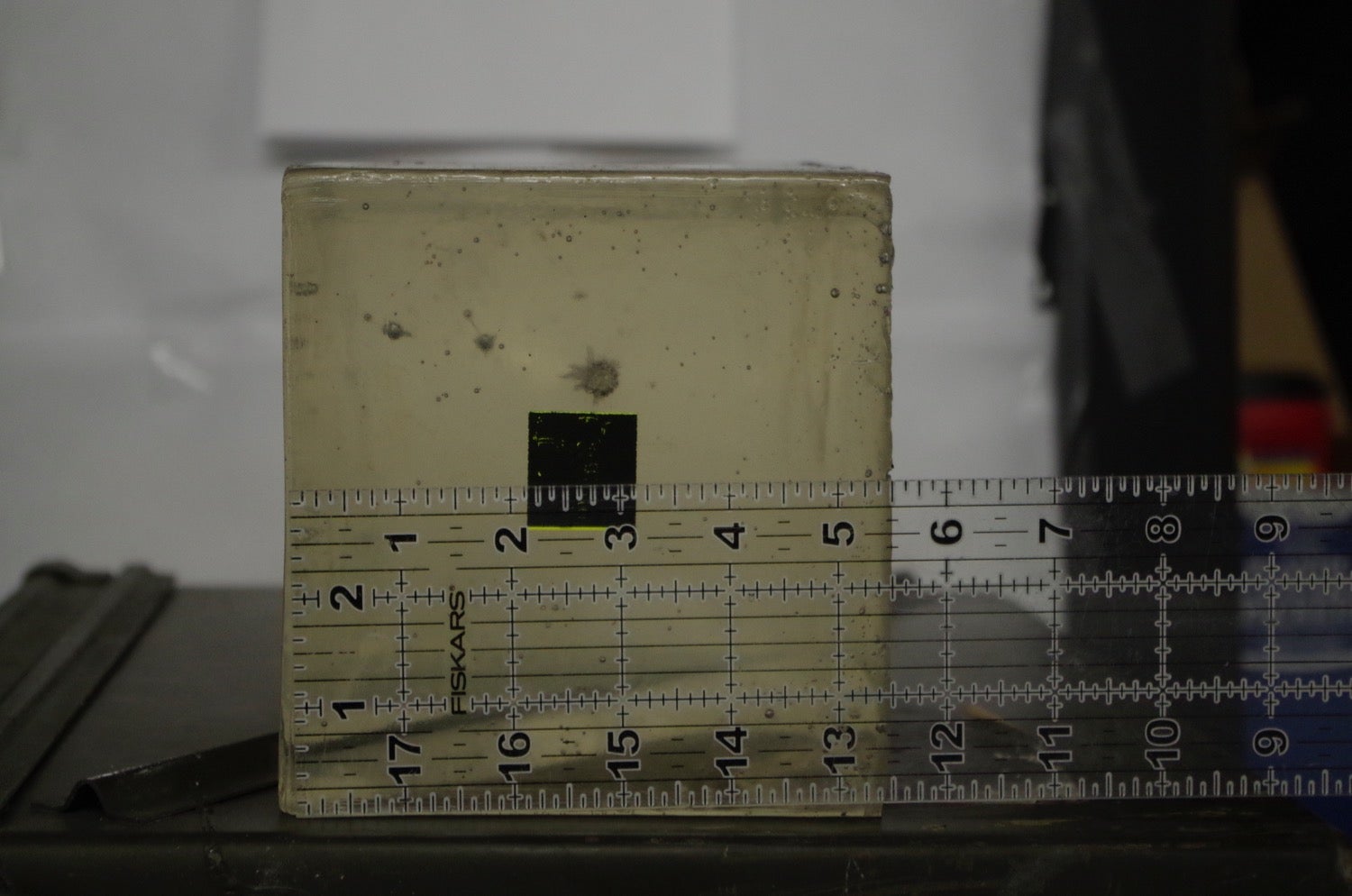
Bare Gel – Front – Hornady
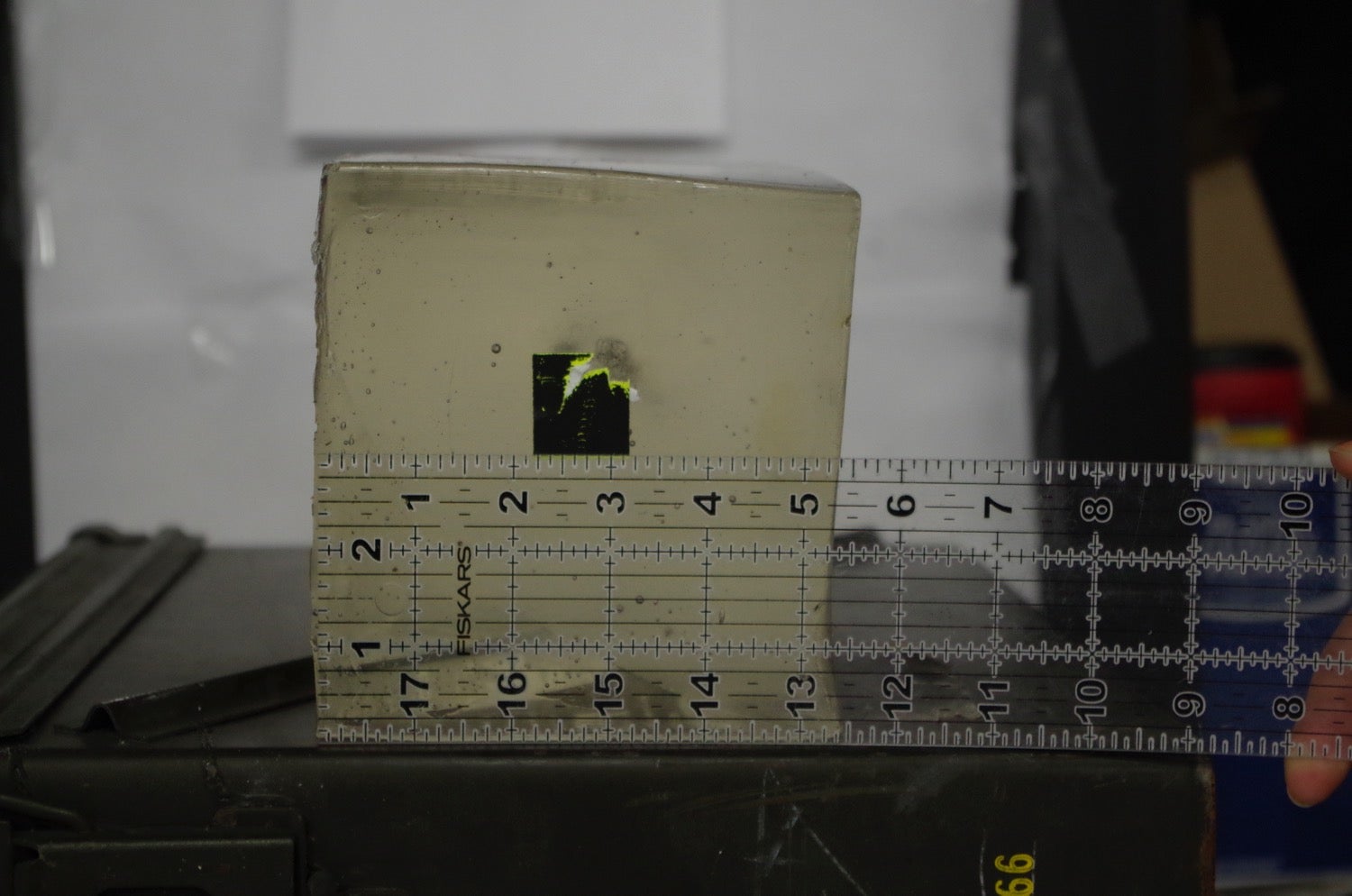
Bare Gel – Front – BH
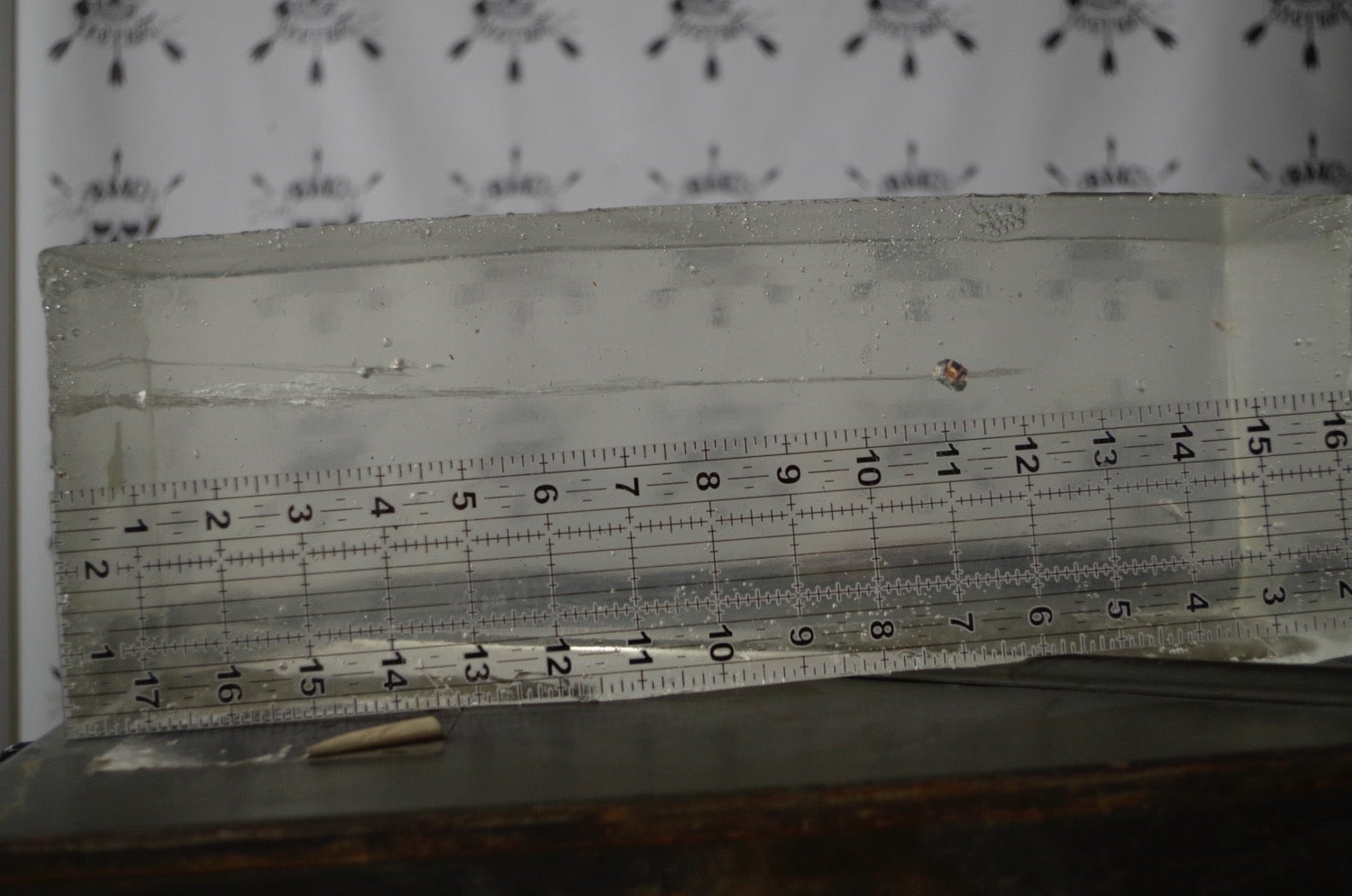
Bare Gel – Side – Hornady
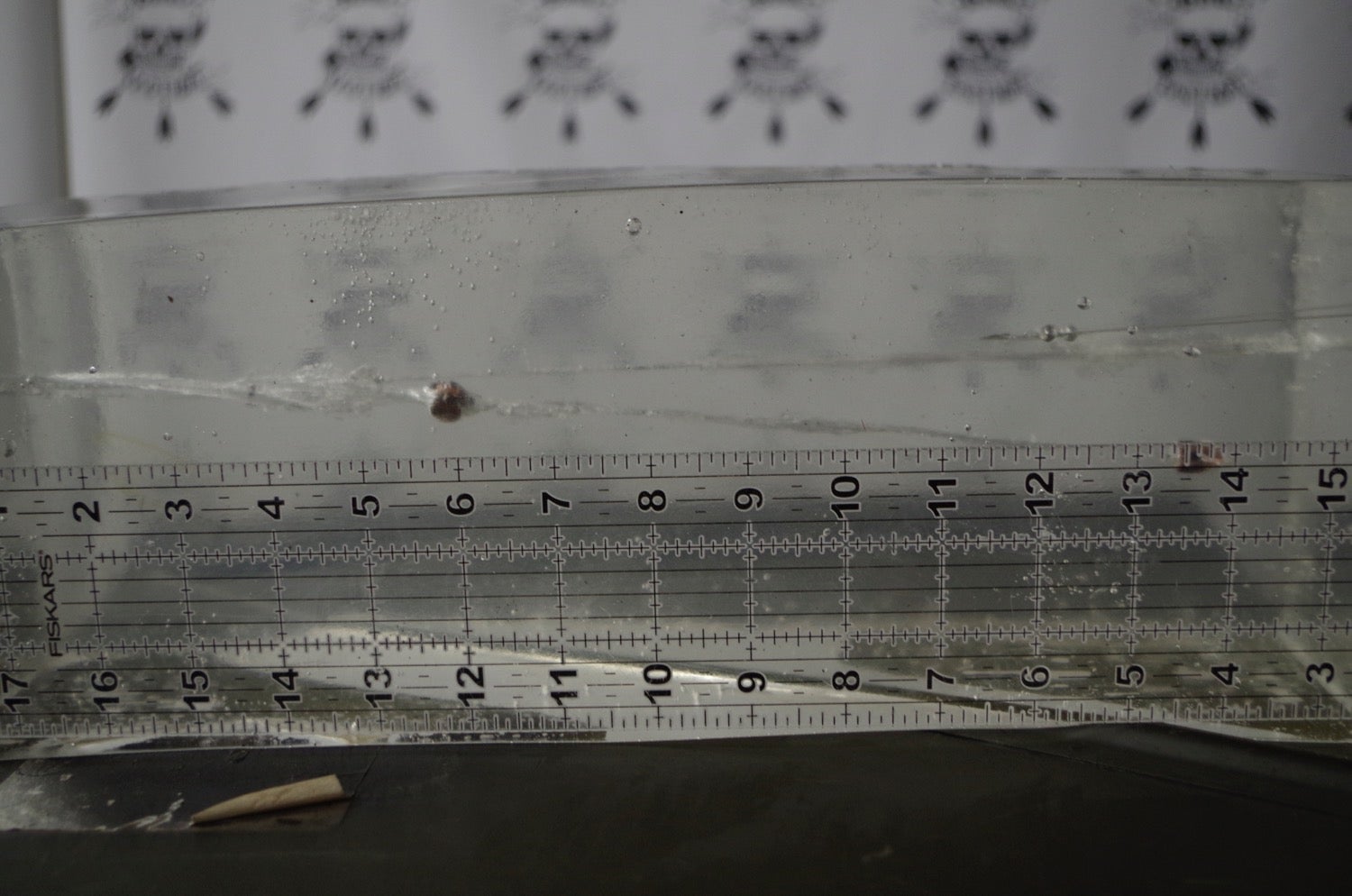
Bare Gel – Side – BH
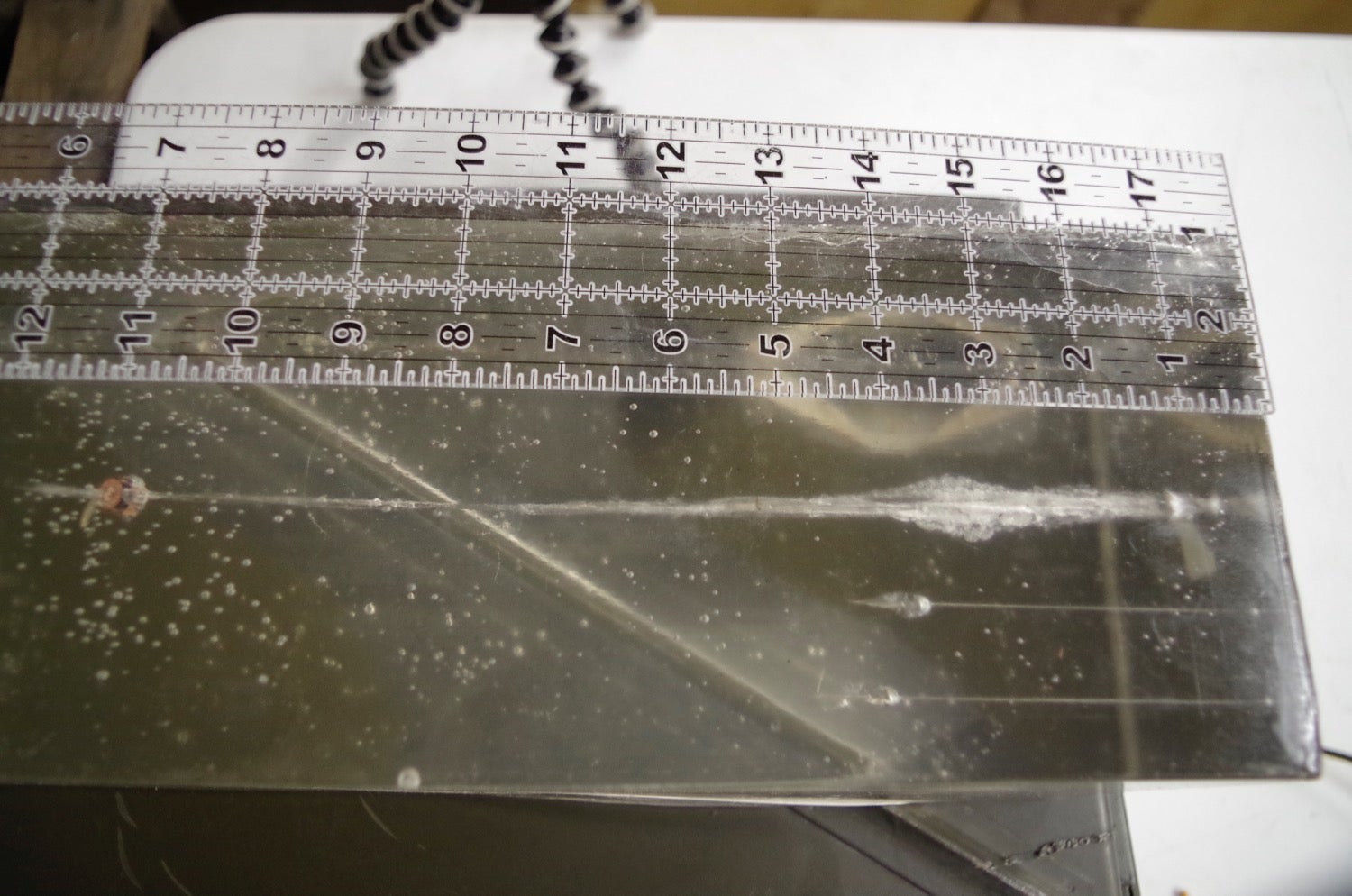
Bare Gel – Top – Hornady
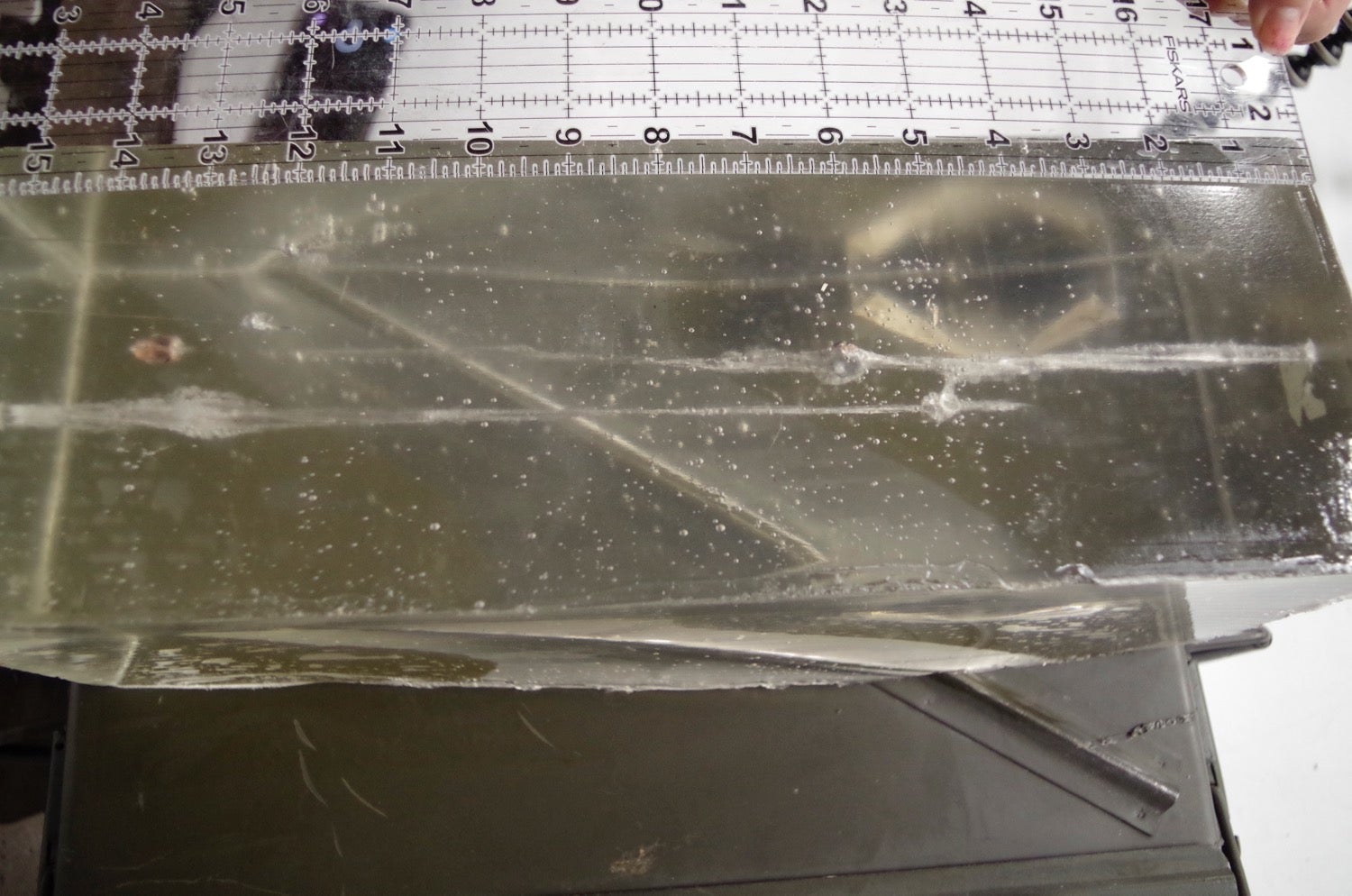
Bare Gel – Top – Cavitation. Note the cavitation bridge near the 5 inch mark.
Findings
The Hornady expended it’s energy around 11 inches while the Black Hills penetrated almost 13.5 inches.
The Hornady would not technically pass the FBI standards as a significant portion of the mass did not penetrate twelve inches.
We had a fun little occurrence during this test. The path of the Black Hills round was close enough to the termination of the Hornady that it’s cavitation channel sucked in the Hornady, and pulled it a little ways.
Test 2: Heavy Clothing
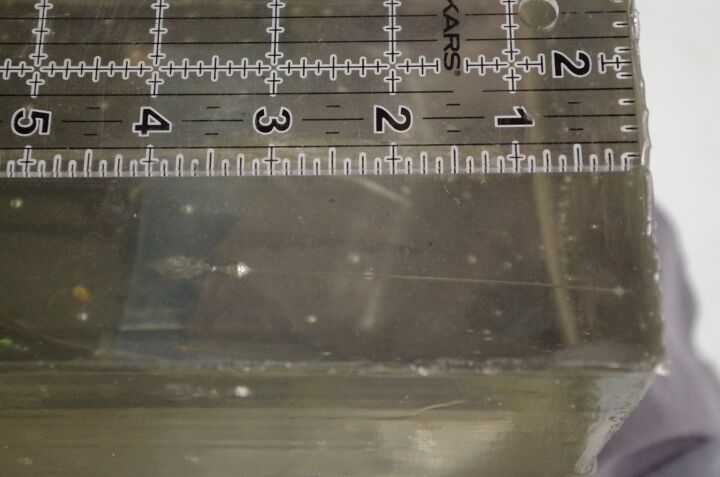
Clothing – BB
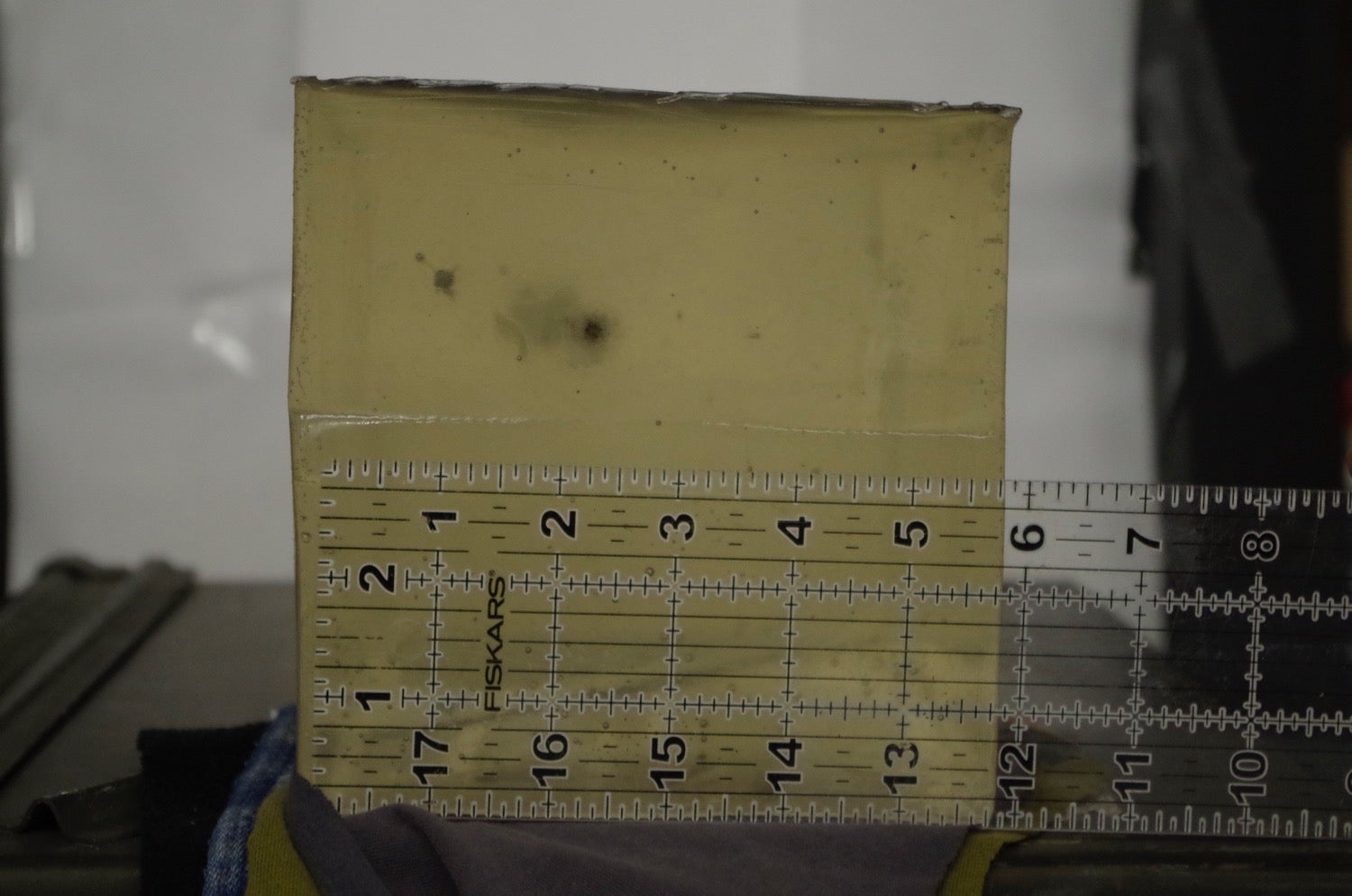
Clothing – Front – Hornady
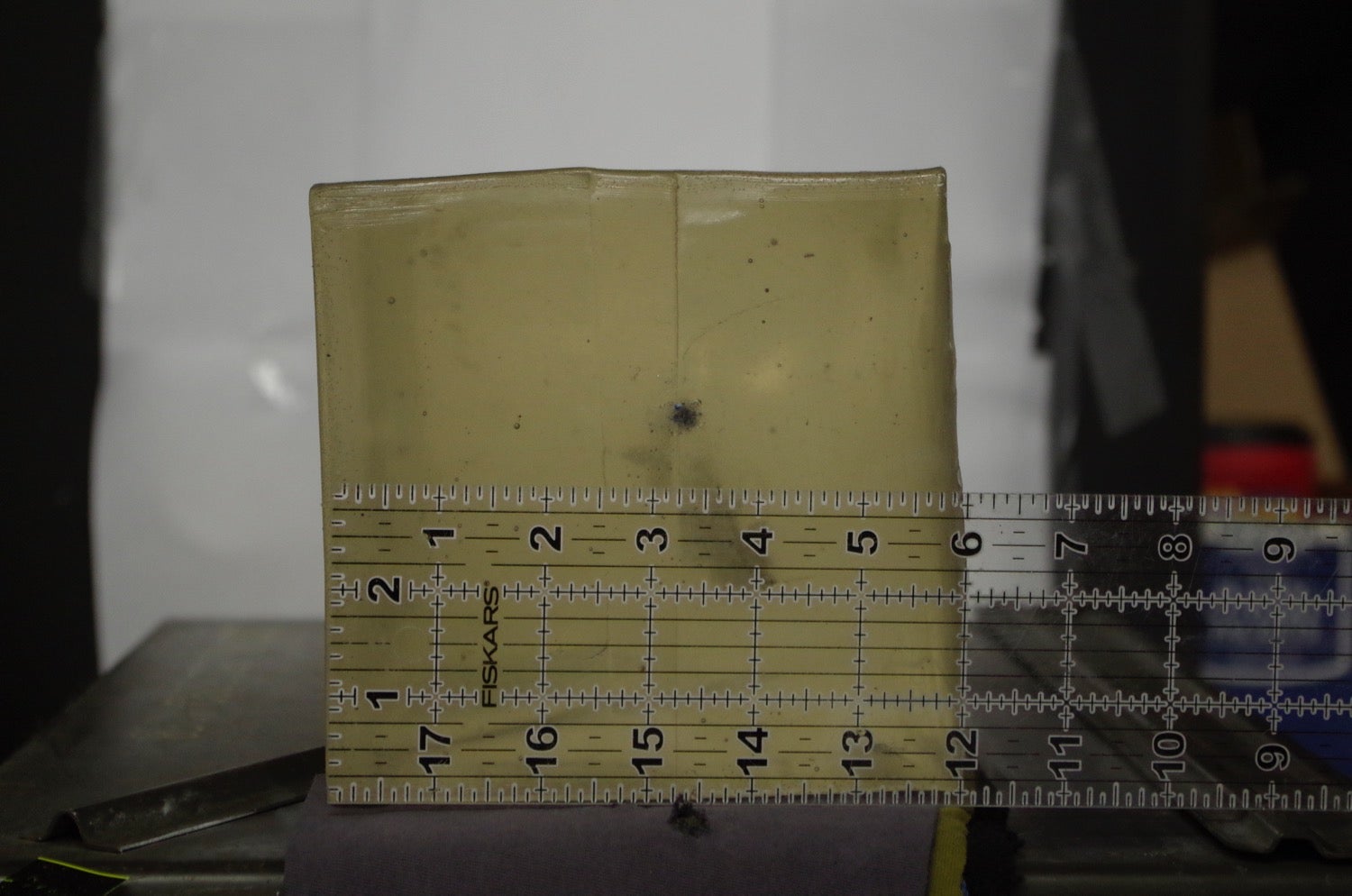
Clothing – Front – BH
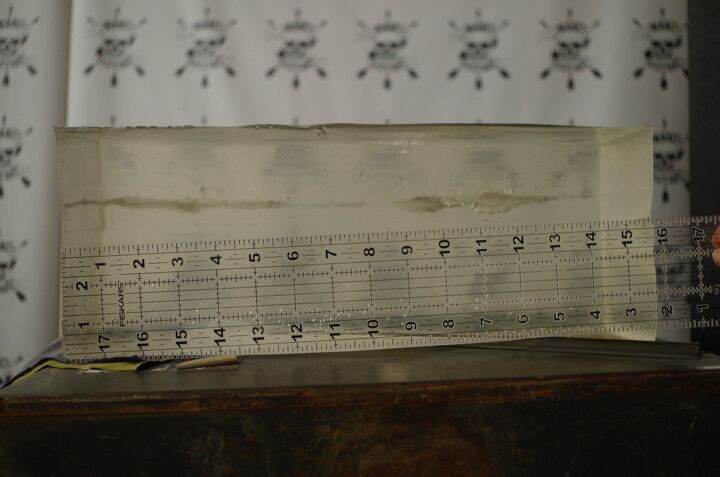
Clothing – Side – Hornady
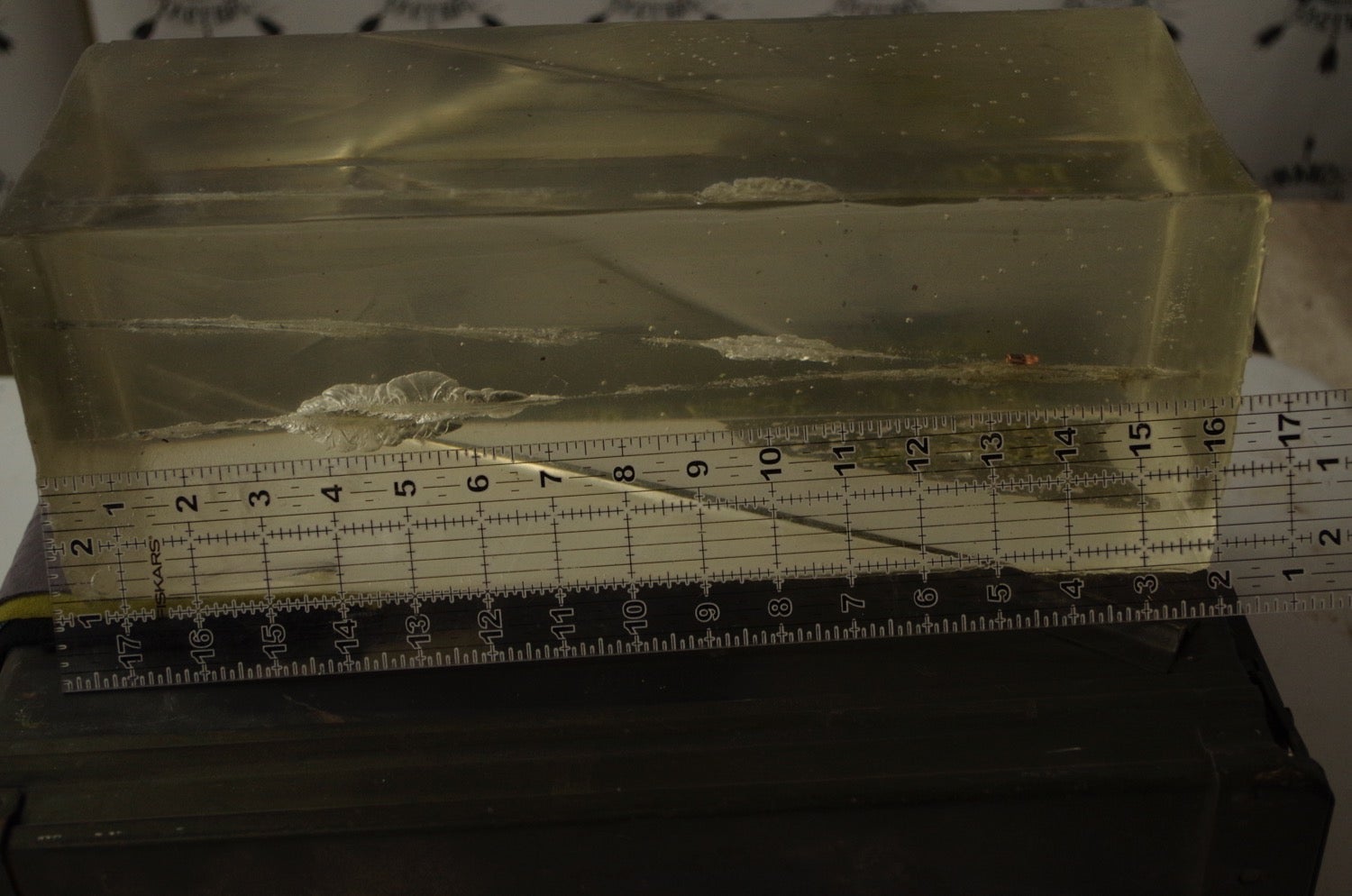
Clothing – Side – BH
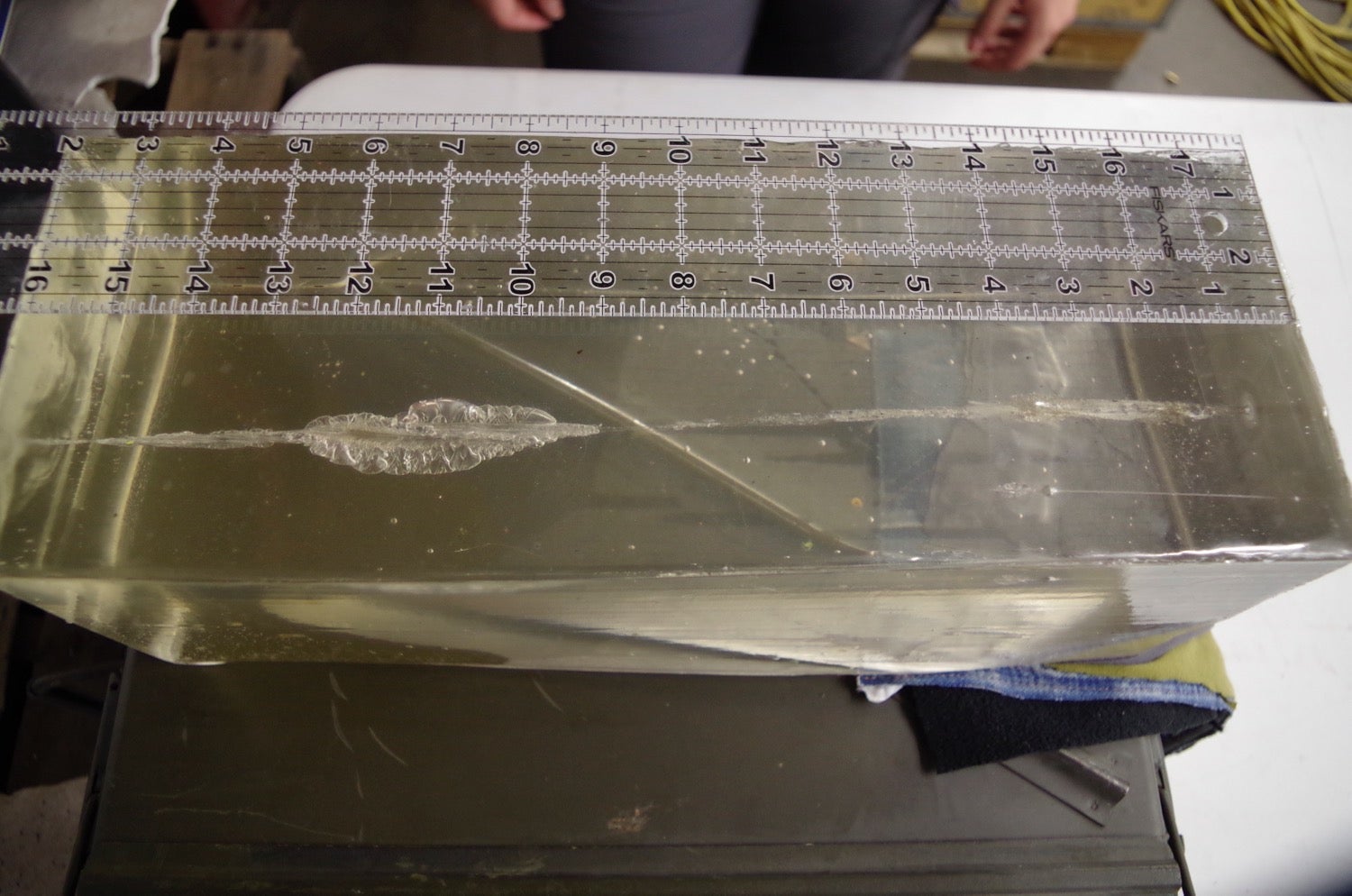
Clothing – Top – Hornady
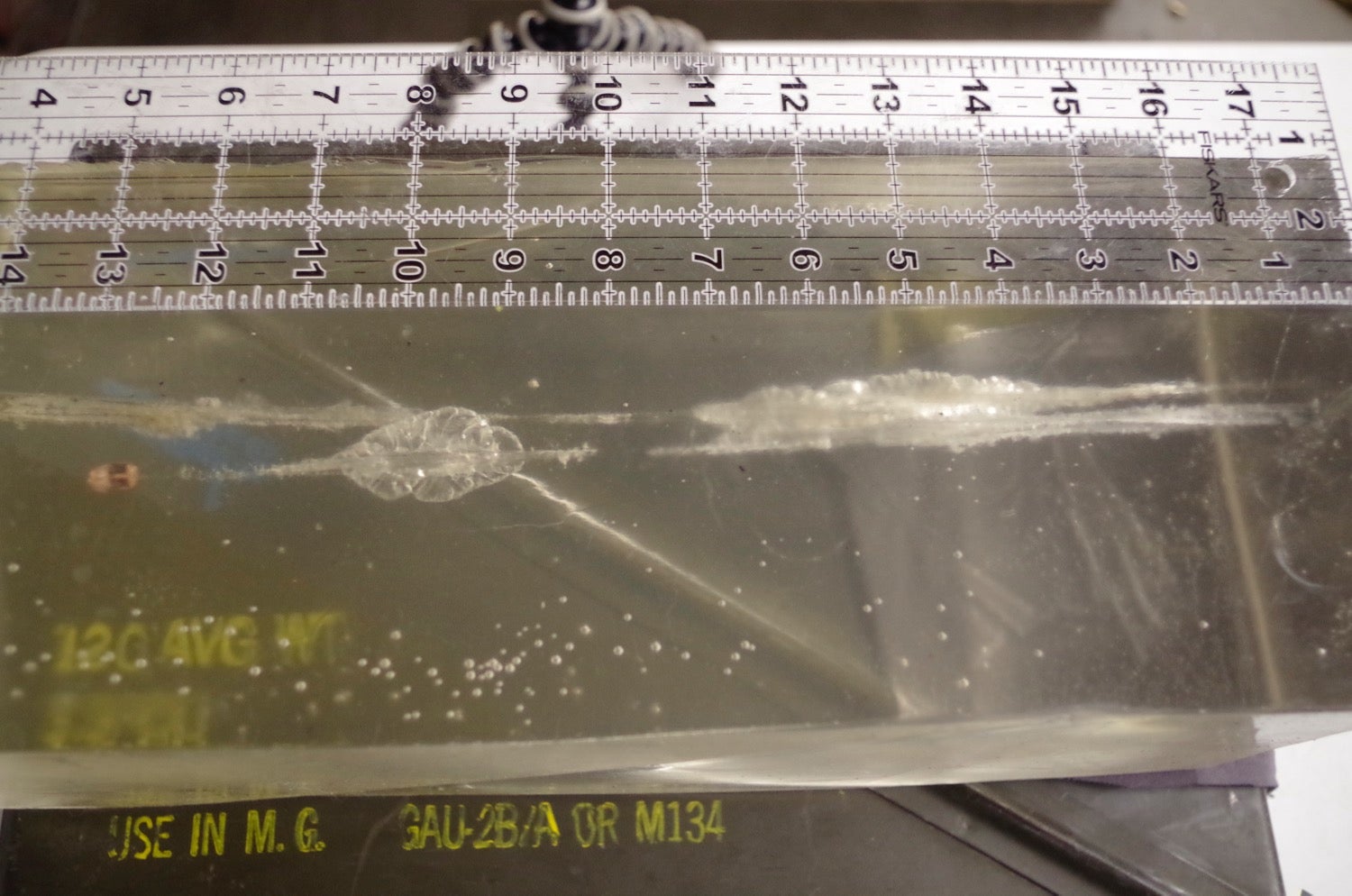
Clothing – Top – BH
Findings
The Hornady over-penetrated and exited the gel whereas the Black Hills penetrated to about 13 inches.
The Black Hills would technically pass the FBI standards as a significant portion of the mass penetrated twelve inches.
Test 3: Dry Wall
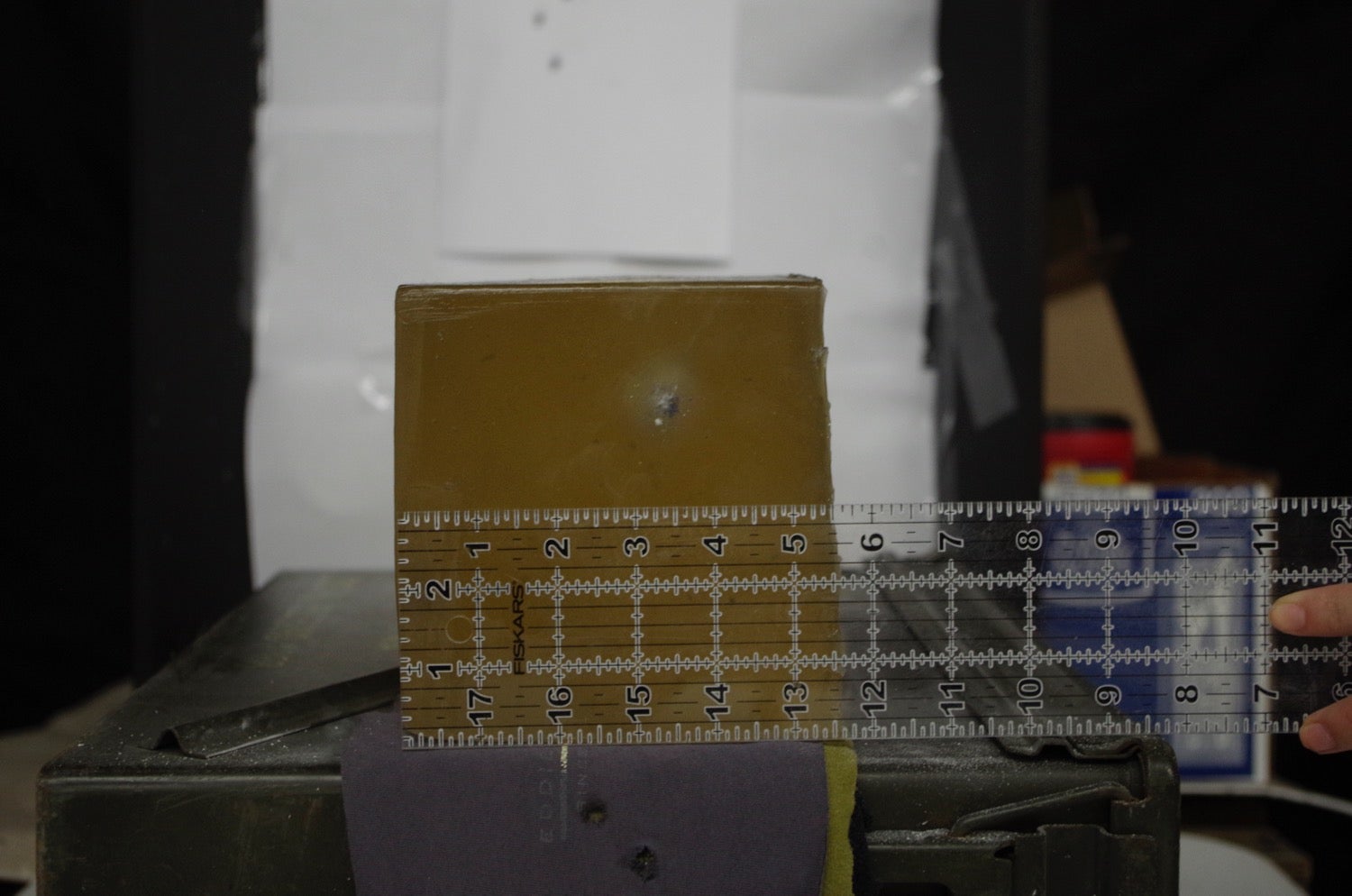
Drywall – Front – Hornady
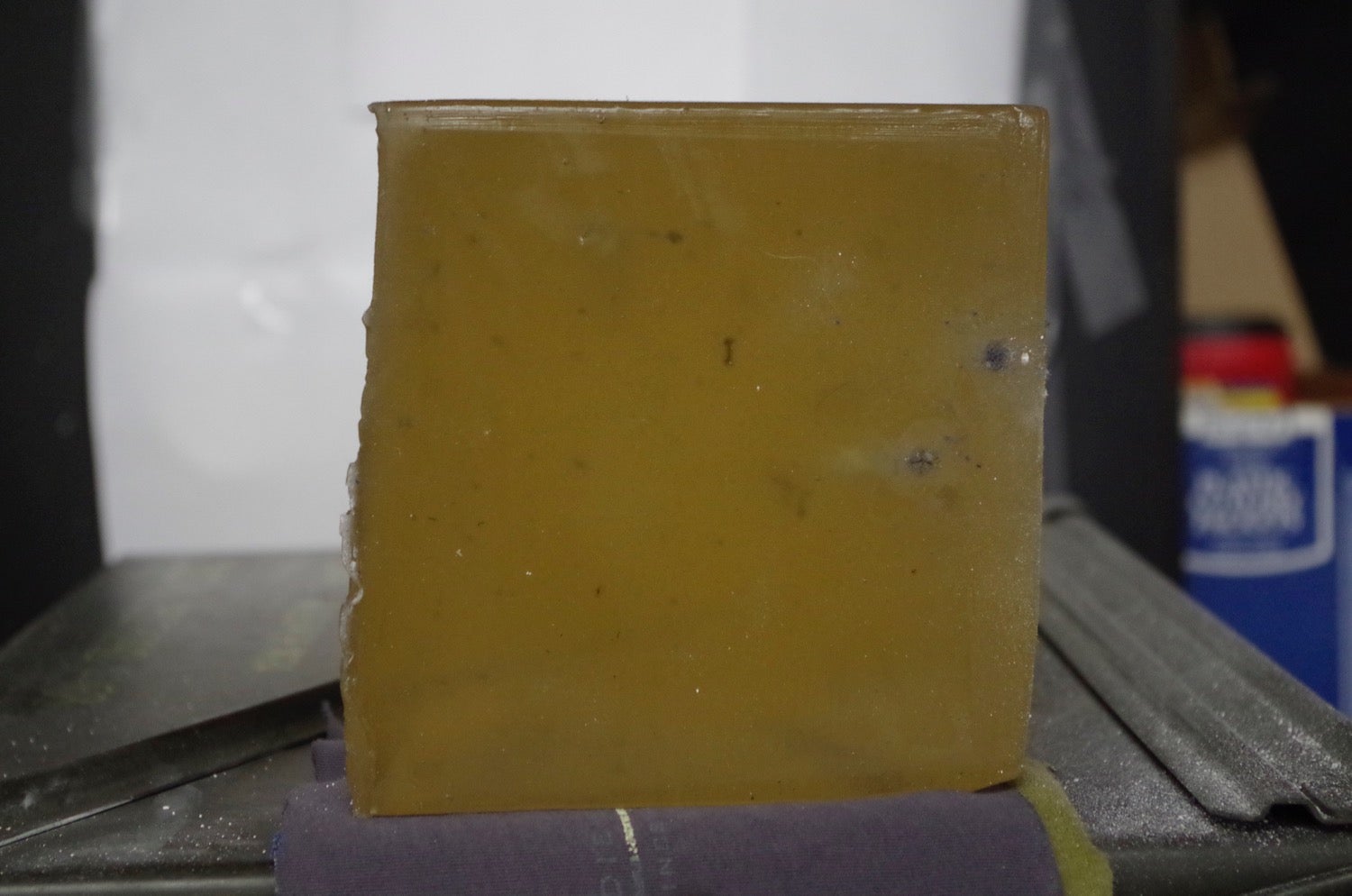
Drywall – Front – BH (we rotated the gel 90 degrees clockwise after the first drywall shot in case it did the same thing)
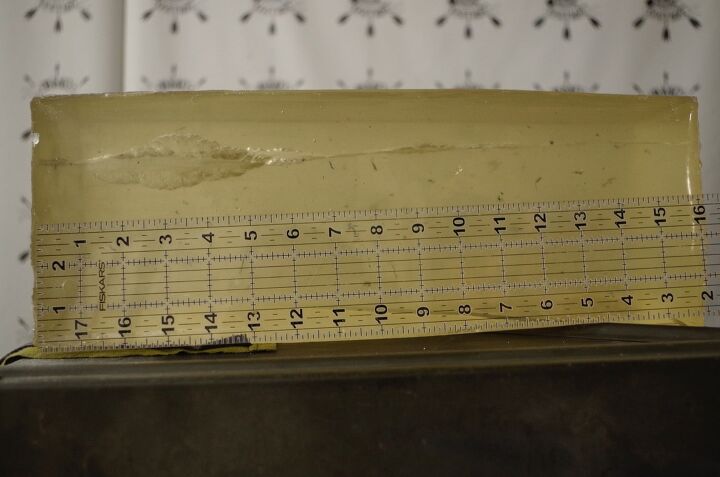
Drywall – Side – Hornady
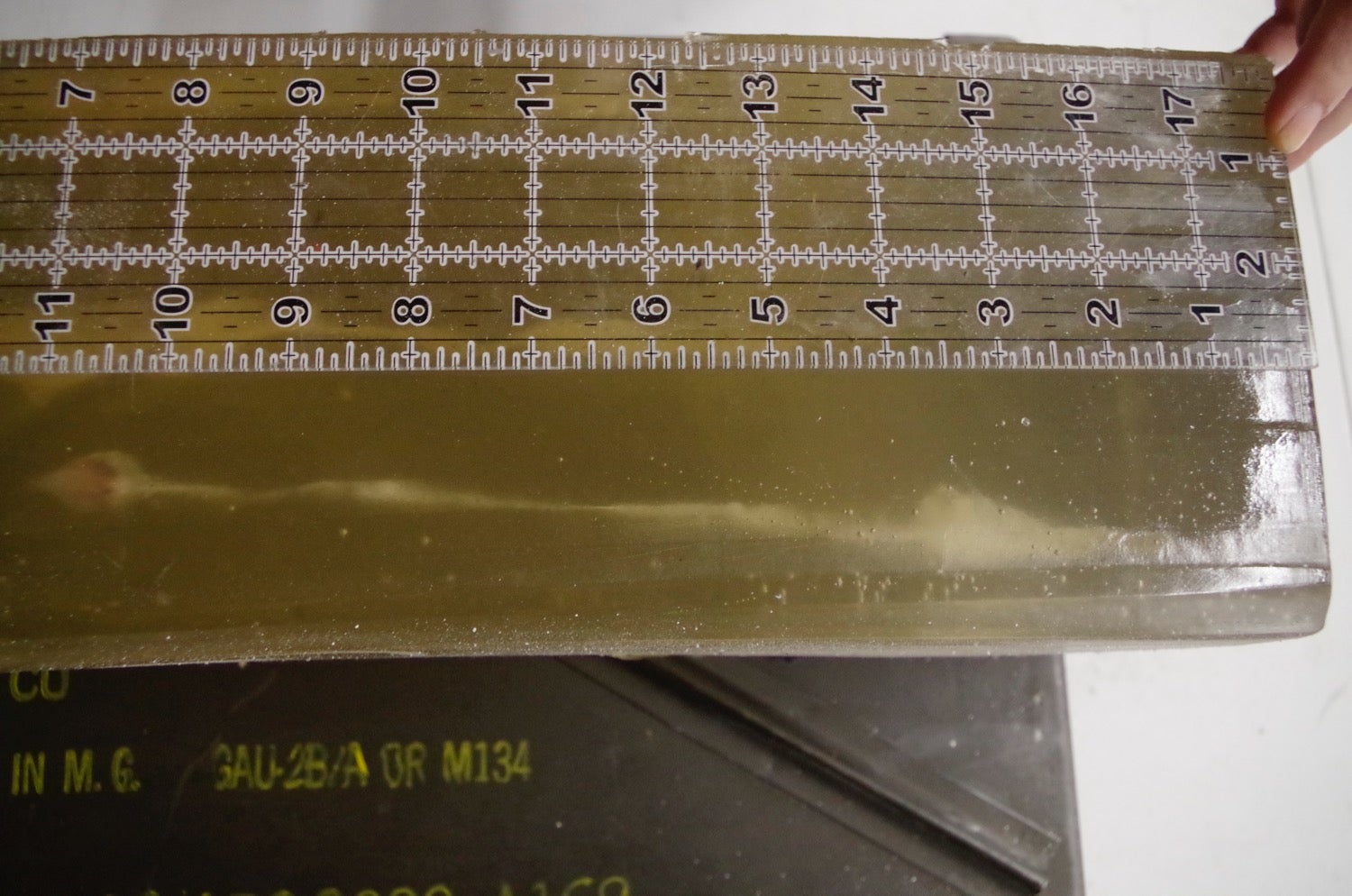
Drywall – Side – BH
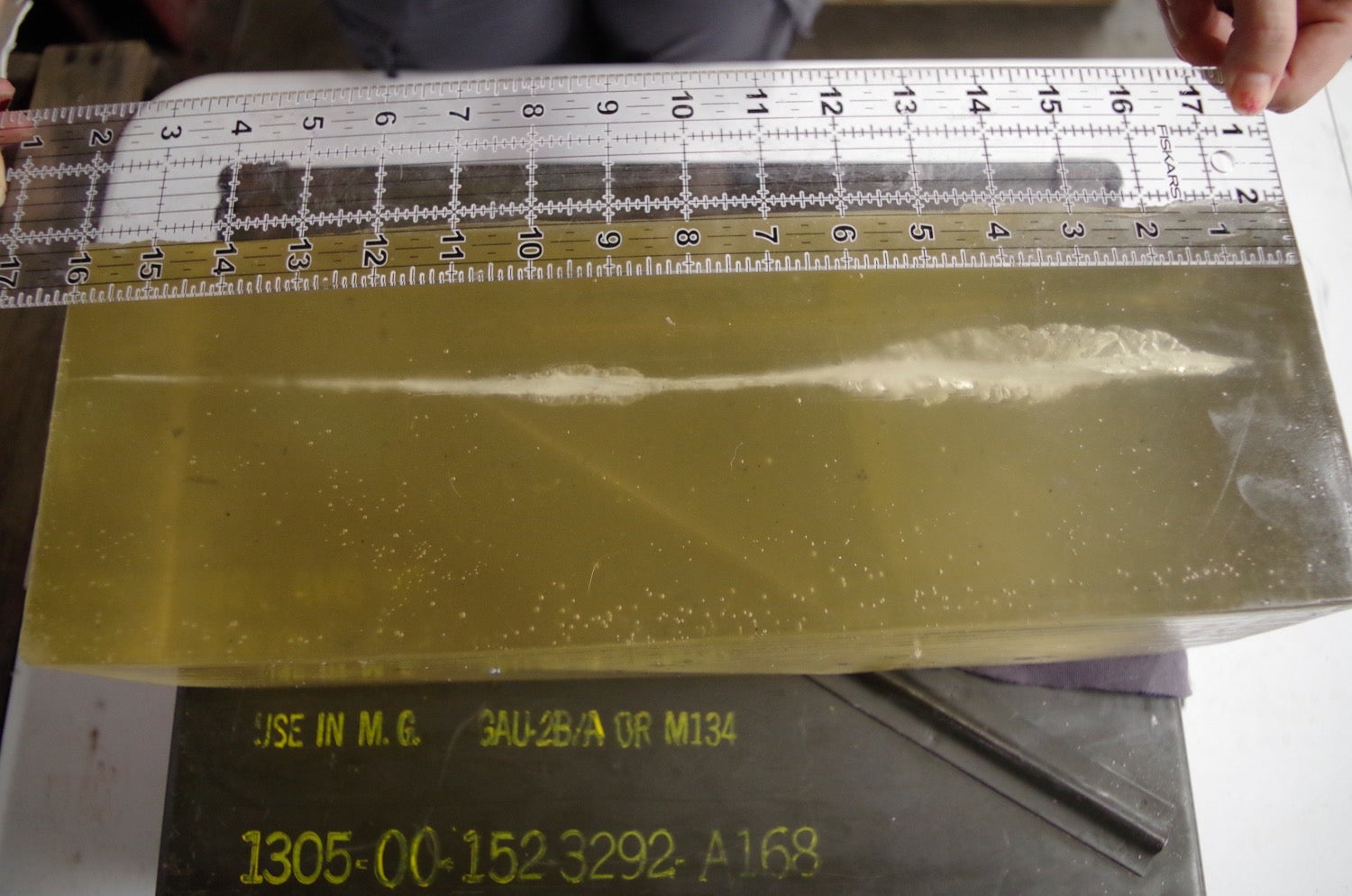
Drywall – Top – Hornady
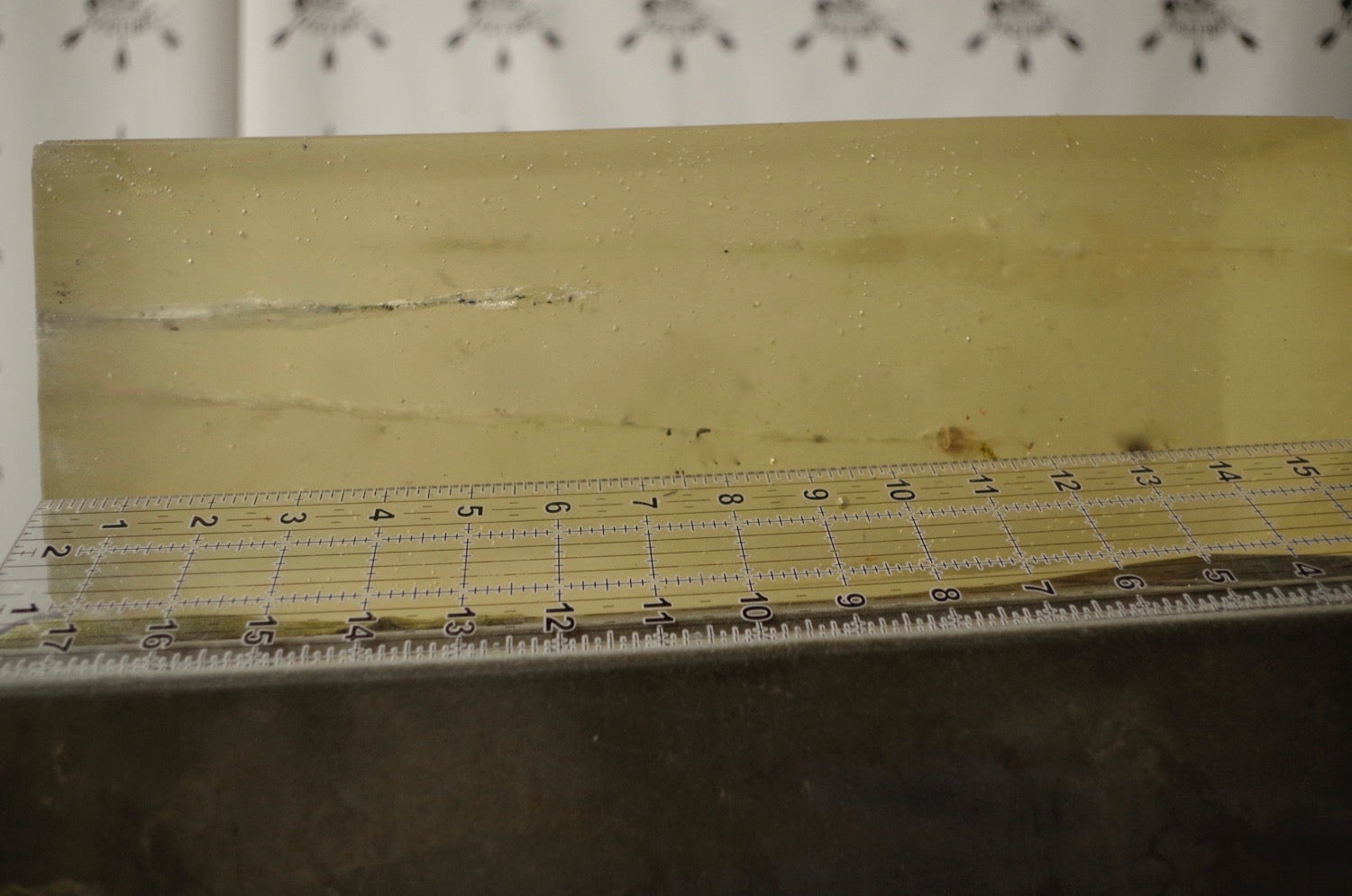
Drywall – Top – BH
Findings
Again the Hornady over-penetrated–pretty much like most hollow points, it packs full of whatever medium it passes through and behaves like a penetrator. It did maintain a very consistent path with no deflection.
The Black Hills demonstrated significant upward deflection when passing through the drywall. The first round exited early so we reconducted the test. The second time it deflected to the right but maintained elevation, stopping in the gel around 11 inches.
The Black Hills would technically not pass as a significant portion of the mass did not penetrate twelve inches.
Test 4: Automotive Glass
The automotive glass was conducted using Tom G’s scaffold from the previous tests we did. This time we were able to cut the windshield down into more manageable pieces. The glass was placed at a forty-five degree tilt, rotated forward by fifteen degrees, and set eighteen inches in front of the gel.
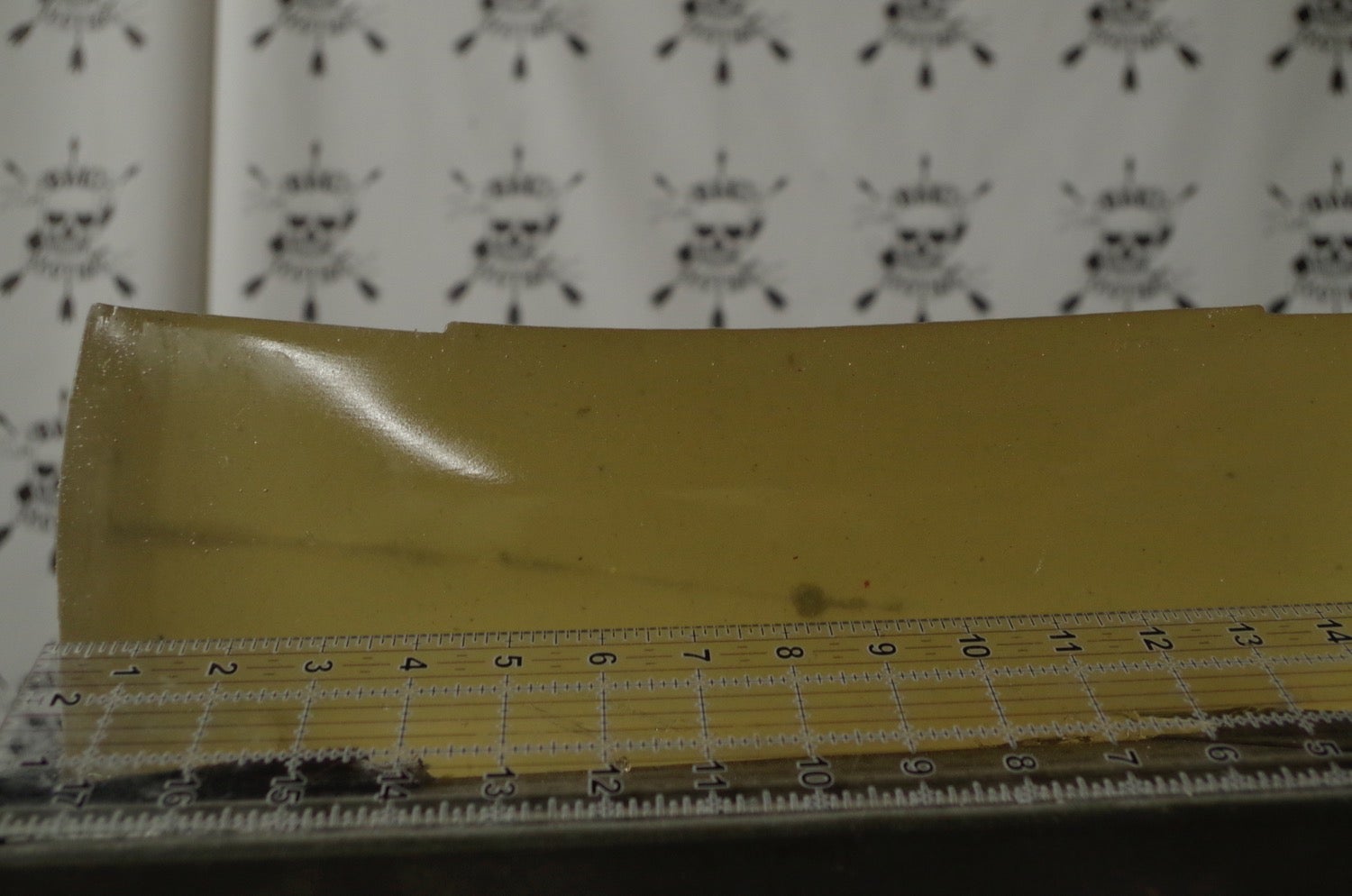
Glass – Side – Hornady
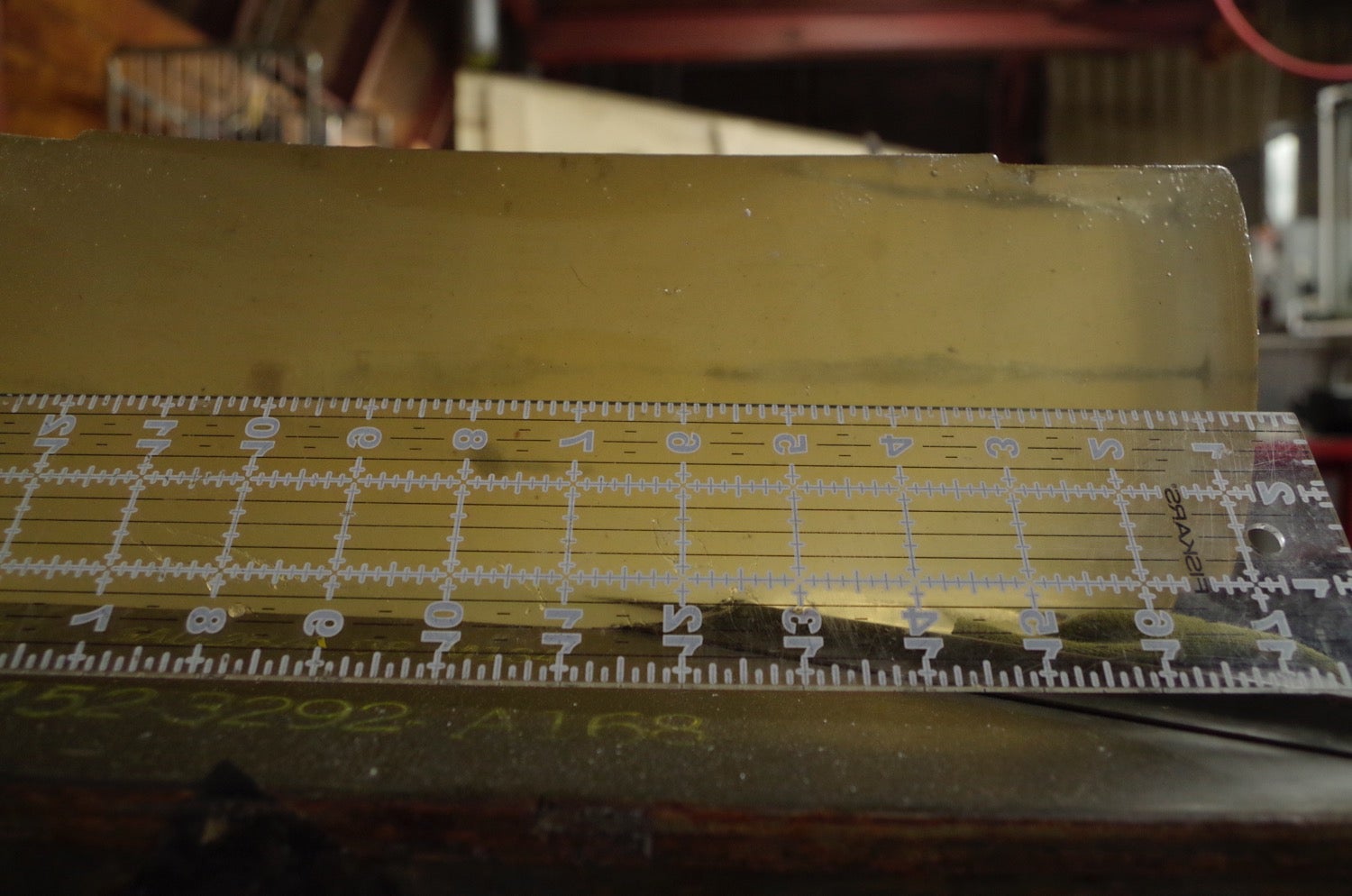
Glass – Side – BH
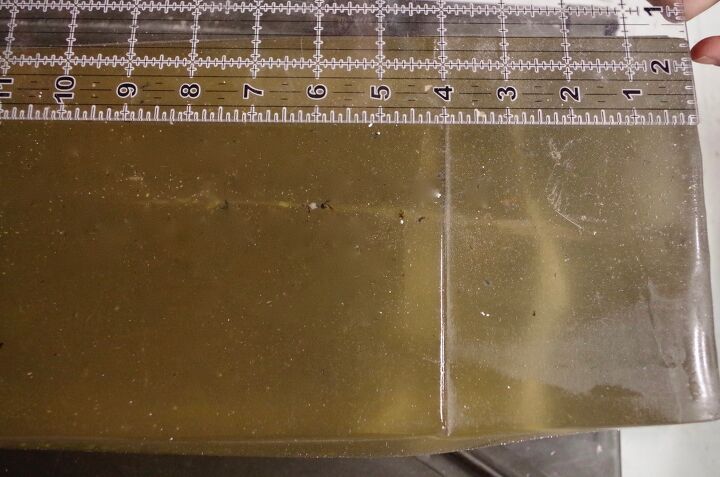
Glass – Top – Hornady
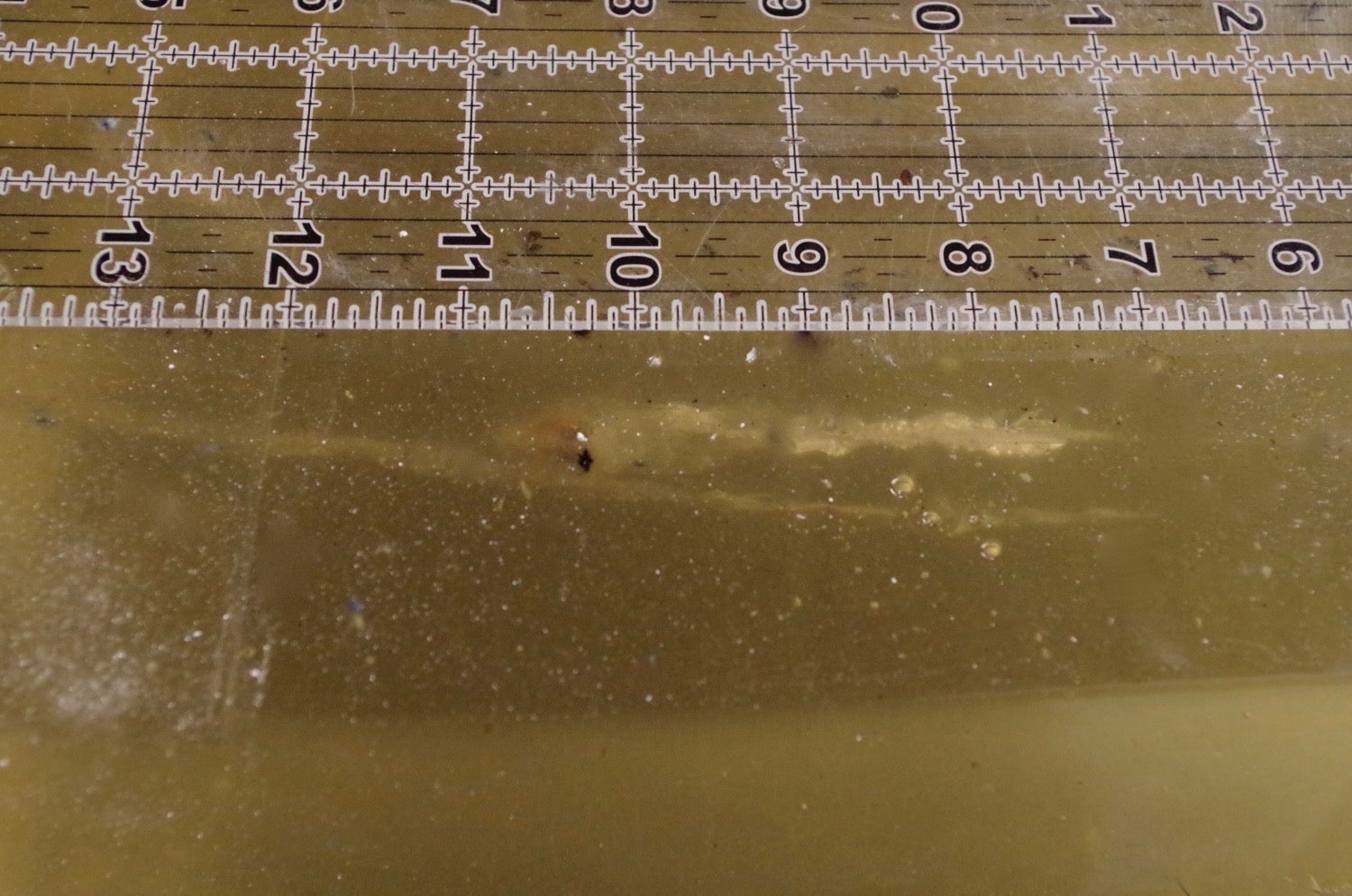
Glass – Top – BH
Findings
The Hornady round demonstrated a slight downward deflection after entering the gel, but did maintain a very flat trajectory between the glass and the gel. It penetrated just under 8.5 inches.
The Black Hills penetrated just a smidge over 10 inches.
Neither round would technically pass the FBI standards as a significant portion of their respective masses did not penetrate twelve inches.
Conclusions
Neither Tom nor I had a .380, nor did really anyone in our tribes. Fortunately Walt had one in storage that we could borrow for this test, a model 85 Beretta Cheetah. It was a really nice pistol, but I’m just not a fan of the caliber.
Both Tom Gomez and I agree that the Black Hills round is pretty effective. There was no real data we could find on either round in a cursory search of its actual performance. Black Hills did show a couple of bare gel tests, but did not indicate what the expected penetration should have been.
As we have seen in a number of tests, rounds penetrating dry wall seem to have some deflection, and generally have been over penetrating. What we did not expect was the Hornady to over-penetrate when transiting clothing. That said, the Hornady maintained a very consistent trajectory in every test–it went where we shot it. It would probably be worth it to reconduct that test a few times and see if we can duplicate that specific result. The Black Hills actually demonstrated a significant upward deflection–enough so that we reshot the test since the first round exited the gel prematurely (and then the second round deflected to the right).
The automotive glass showed no significant deflection for either round (the Hornady had a slight downward deflection). That result was different than our previous tests, which generally showed deflections through glass.
We can debate the efficacy of the FBI standard (in the comments), but it is a pretty well defined and understood test at this point, and provides a good way to compare rounds.
Credits
Thanks to Clark Armory and BMC Tactical for sponsoring and supporting this test. Clark Armory provided the Ballistic Gel from ClearBallistics and the ammo (they sell the Black Hills: Black Hills .380 Auto Xtreme Defense Ammunition, but not the Hornady).
BMC Tactical provided an indoor lane with consistent lighting and temperature to run the test, and a .380 Auto pistol for us to use.
We appreciate these two companies providing necessary materials and infrastructure for the tests.
 Your Privacy Choices
Your Privacy Choices
